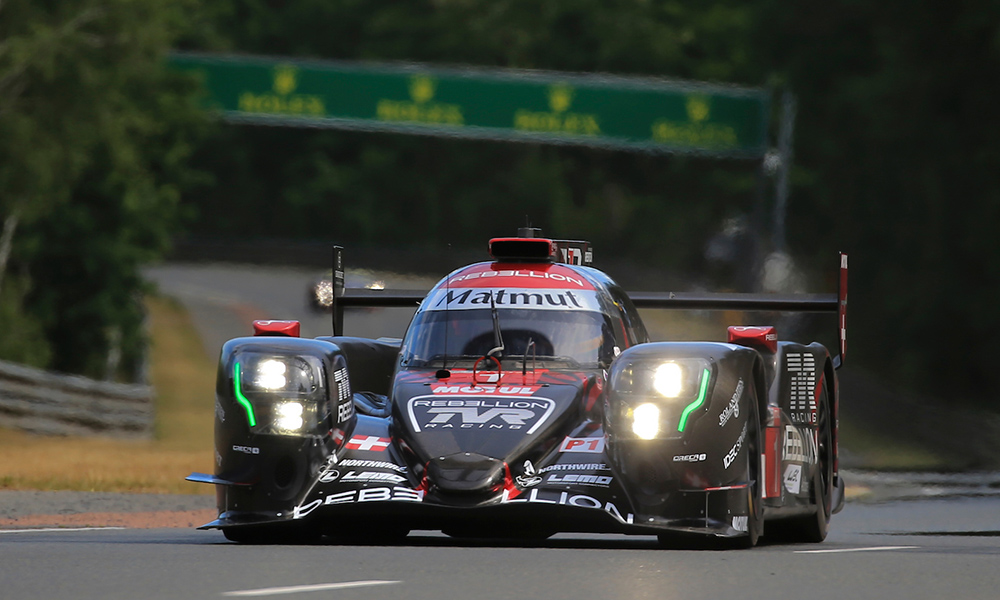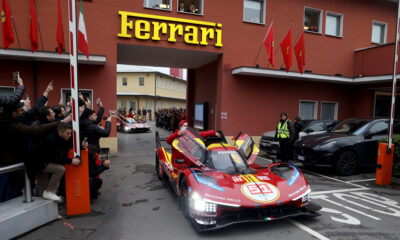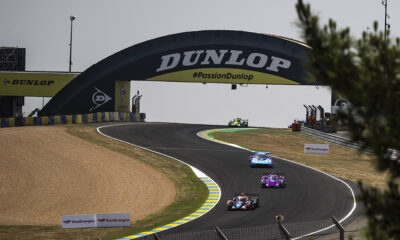
Photo: MPS Agency
Rebellion Racing felt that different track conditions contributed to the Anglo-Swiss LMP1 team adding just over one and a half seconds to its best 24 Hours of Le Mans Test Day time from last year.
When asked about the disparity between Rebellion R13 Gibson’s numbers from same event 12 months ago, Rebellion driver Gustavo Menezes noted the hot conditions as a possible factor.
On Sunday, the best of the Rebellions posted a time of 3:21.323 in the hands of Andre Lotterer, which held out as the fastest non-hybrid lap, while the team’s quickest time from 2018 was Mathias Beche’s 3:19.680 effort.
Beche’s lap was enough to split the pair of Toyota TS050 Hybrids, while this time around the Japanese manufacturer held a 1.8-second gap over the non-hybrid field.
“I can’t remember the temperature last year, but it was bloody hot today and obviously, that changes the track temp,” Menezes told Sportscar365 after the test.
“Last year, the track came a lot quicker than it did this year as well. It felt like there was less overall grip.
“I still think we’re quite happy with where we are, but we need to work a lot more for next week.”
Rebellion team principal Bart Hayden echoed Menezes’ sentiments, hinting that the non-hybrid cars – particularly the R13 Gibsons – would have more to give during race week.
Air temperatures were hotter this year than in 2018, and while similar peak surface temperatures were recorded, Sunday’s track took longer to reach its optimal heat.
“I don’t think the track was all that great, to be honest,” Hayden told Sportscar365.
“It took a while to start to come. Andre’s lap time came right at the end. I think there’s probably more to come from the track and then the car will just come with it.
“We’ll have to see the times compared to ’18, for example, to see whether the track’s different or not.
“But we worked through a mega load of setup stuff that we wanted to do and gathered lots of data, so we’re happy with the progress that we’ve made.”
Menezes described the Rebellion, which was running its new low-downforce aero kit on the 8.5-mile Circuit de la Sarthe for the first time, as a “proper Le Mans package”.
However, he noted that the car was lacking in top-end speed compared to SMP Racing’s BR Engineering BR1 AERs.
In the speed traps, SMP had the fastest LMP1 car with Stoffel Vandoorne clocking in at 217.5 mph (350 km/h) to go 7 mph quicker than the Rebellion, which placed second in the charts.
Menezes reckons SMP has more to give heading into the WEC season finale.
“To be honest, if you see their theoretical, I think they have a lot more in them,” he said.
“It’s never easy for us when you see that, but we’ll just have to wait and see. It’s going to be a very long race, and while those turbocharged engines are quick, we’ve all got to make the 24 hours.”
Rebellion Reaching “Absolute Limits” of Car Potential
Menezes added that the Rebellion is reaching “the absolute limits” of its potential under the revised LMP1 Equivalence of Technology for Le Mans.
Since last year’s event, the non-hybrids have been scaled up to an ‘unlimited’ amount of maximum petrol energy and a greater fuel flow rate.
“With the naturally aspirated engine, there’s only so much power we can get. Honestly, of the privateers, the turbocharged engines had a bit more of a benefit from it,” he said.
“There’s only so much you can do. When you get a tuner car and you tune it up, there’s only so much power you can put in it before it becomes dangerous.
“Honestly, if they kept [issuing EoT concessions] we can’t improve more. Maybe a bit of weight here and there, but it’s getting to the absolute limits.
“The only thing they can do is bring the Toyotas closer to us, which isn’t so much of a bad thing because every year they come and they go over a second faster. They’re not racing against Porsche and Audi. There’s nothing to prove.
“I think the EoT is very difficult. We’re doing everything we can and we’re doing baby steps in a marathon. We make a few metres, we’ve got 25 miles to go.”
























